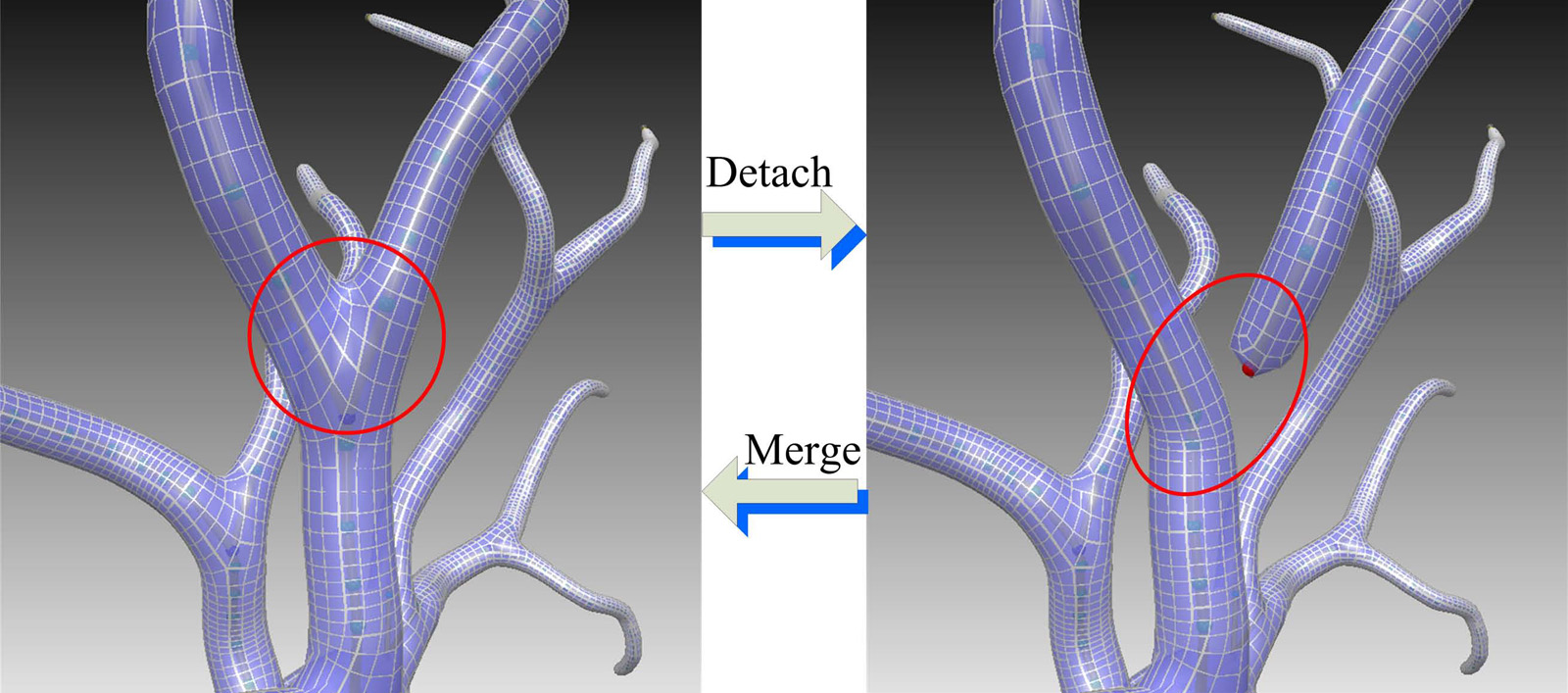High-quality Tree Structures Modelling Using Local Convolution Surface Approximation
The Visual Computer, 2015, 31(1): 69-82.
Xiaoqiang Zhu, Xiaogang Jin, Lihua You

The detaching and merging procedure.
Quercus. In the first row, the images show the
original tree meshes (the 1st column), the extracted line skeletons (the
2nd column), the created bounding polyhedrons (the 3rd column), the
results after the second subdivision and approximation (the 4th column),
and the final rendering images with texture mapping (some leaves and
branchlets are additionally involved) (the 5th column). The images in
the 2nd row are the newly composed trees with the subtrees
generated from the one in the 1st row.
Abstract
In this paper, we propose a local convolution
surface approximation approach for quickly modeling tree structures with
pleasing visual effect. Using our proposed local convolution surface
approximation, we present a tree modeling scheme to create the structure
of a tree with a single high-quality quad-only mesh. Through combining
the strengths of the convolution surfaces, subdivision surfaces and GPU,
our tree modeling approach achieves high efficiency and good mesh
quality. With our method, we first extract the line skeletons of given
tree models by contracting the meshes with the Laplace operator. Then we
approximate the original tree mesh with a convolution surface based on
the extracted skeletons. Next, we tessellate the tree trunks represented
by convolution surfaces into quad-only subdivision surfaces with good
edge flow along the skeletal directions. We implement the most
time-consuming subdivision and convolution approximation on the GPU with
CUDA, and demonstrate applications of our proposed approach in branch
editing and tree composition.
Download
| PDF, 7.6MB | Video, 26.3MB |
© Springer. Personal use of this material is permitted. However,
permission to reprint/republish this material for advertising or
promotional purposes or for creating new collective works for resale or
redistribution to servers or lists, or to reuse any copyrighted
component of this work in other works must be obtained from Springer.